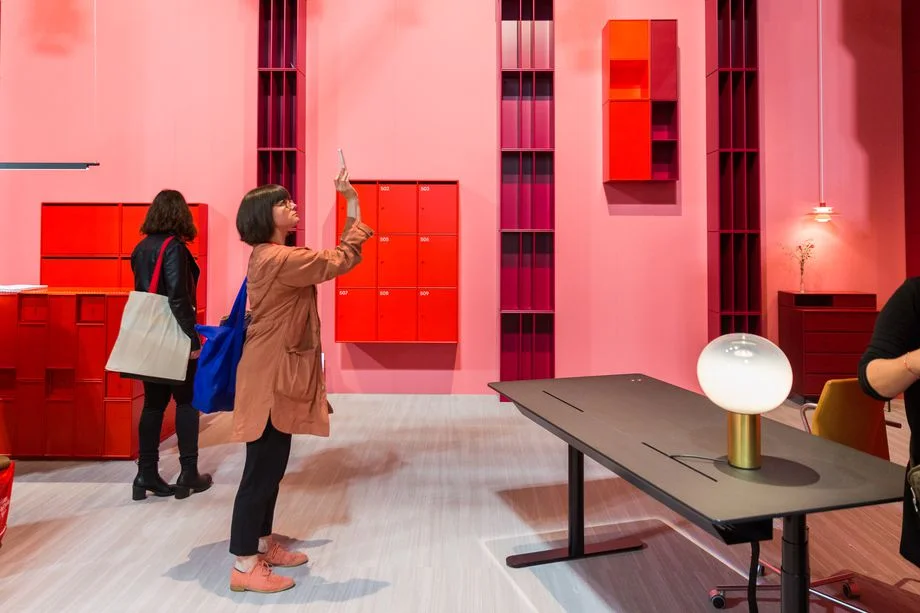We’ve returned from Milan for the 2018 Salone del Mobile—the annual event that remains the design world’s biggest outing. After ogling approximately 421 chairs, petting countless versions of woven upholstery (most of them produced by the Danish company Kvadrat), and selfie-ing in elaborate mirrors all over town, we have more queries than conclusions about What It All Means. Join us as we lay out some pressing questions:
Does anyone give a fig about sustainability?
The glory of Milan is partially thanks to its over-the-top nature. Austere it is not. (Evidenced by the general freak-out over Hermès’s weeklong installation, which entailed ten or so interior pavilions clad in 150,000 zellige tiles imported from Morocco.)
The official fair, Salone del Mobile, issued a manifesto calling for “exhibitors to have a greater awareness of the impact of their products on the environment,” echoing ideas that have been argued by the likes of Dutch designer Hella Jongerius and British critic Alice Rawsthorn. As Rawsthorn wrote back in 2015, the yearly to-do in Milan has “unintentionally reinforced the popular stereotype of design as a superficial, stylistic tool steeped in consumerism.”
For every Emeco—which has a tightly edited product line and takes care to manufacture new products out of post-consumer recycled material—there are ten companies whose Salone installations display dozens of prototypes that aren’t in production (and may never be). Aside from the time, money, and material spent to pull off such a feat each April, it hardly seems a sustainable model for designers themselves, who get paid through royalties, i.e. only once their product is available on the market.
Every year during Milan’s design week, industry attendees (designers, manufacturers, buyers, journalists) can be heard bemoaning just how crowded it’s gotten around town. Cranky empirical musings aside, the official fair clocked a 26 percent increase from 2017—more than 430,000 visitors over six days. Milan’s status as a mecca for design and art is undisputed, but one has to wonder about furniture’s newfound power to draw a crowd. The Instagram effect is real—and the company was out in full force throughout the week, hyping its new @design account.
Reinforcing Milan’s uniquely seductive qualifications as a design week hub are the city’s gobsmacking number of palazzos. Brands have hipped to the fact that a glorious neoclassical pile makes for a pretty spiffy furniture installation—thus, Gubi, Hay, Swarovski, Cos, Doppia Firma, and countless others are now displaying their novelties to an adoring public on terrazzo floors under vaulted ballroom ceilings.
The Best Dressed award goes to Villa Borsani, a private home by architect Osvaldo Borsani, better known as the designer for most of the back catalog of Italian manufacturer Tecno. The villa’s location half an hour outside of the city center, coupled with ticketed entry and curation by Design Miami/ cofounder Ambra Medda, made it the destination for design pilgrims seeking an experience out of the ordinary.
Vitra booth at Salone del Mobile, featuring a patchwork textile sofa by Hella Jongerius. Courtesy Alessandro Russotti / Salone del Mobile.Milano



